Nail fungus or onychomycosis is not just an aesthetic defect of the skin, but a fairly serious disease that requires an appropriate therapeutic approach. If timely assistance is not provided, the nail may deform or be completely destroyed, and sometimes advanced disease is accompanied by damage to internal tissues. This infection can be fought in various ways, including traditional medicine recipes and the use of disinfectants.
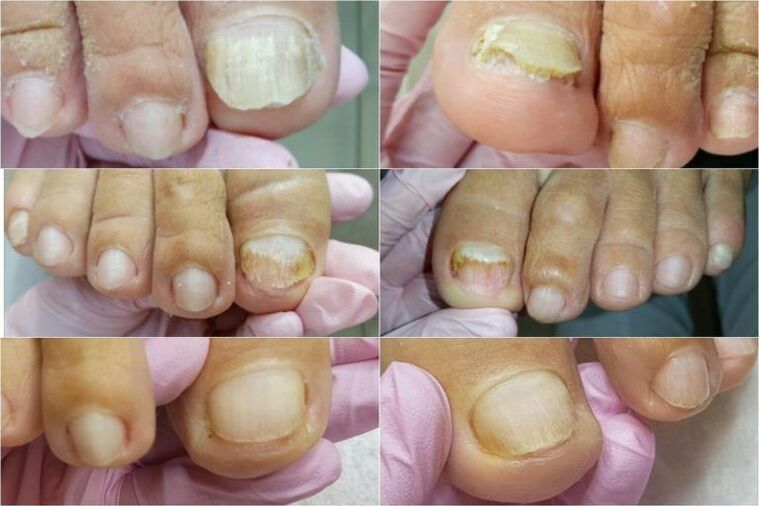
Signs of nail fungus development
Nail fungus is a common disease characterized by damage to the nail plate. You can become infected with it in public places, in recreation centers and simply in everyday conditions. Spores of parasitic microorganisms live for a long time in household and personal hygiene items, carpets and bed linen after disinfection. There is therefore a risk of reinfection.
Signs of the fungus differ depending on the stages of the disease. The first symptoms are quite mild. The patient does not attach much importance to the infection and takes his treatment lightly.
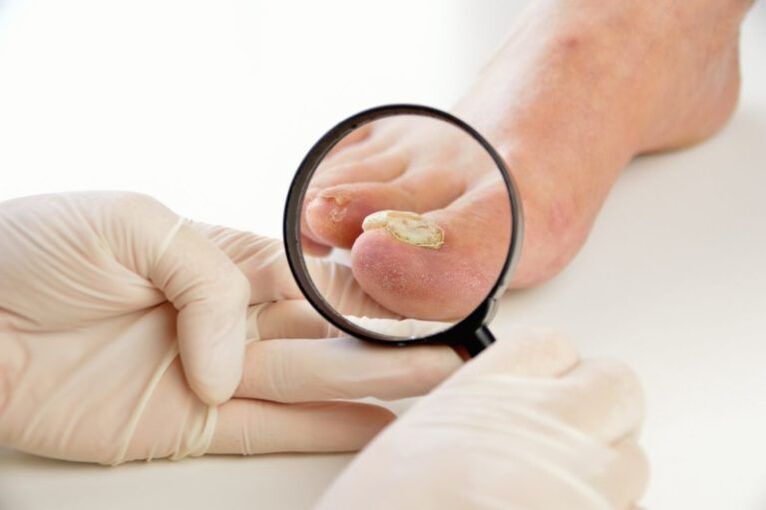
The disease itself begins to develop in the interdigital folds. There is slight peeling and itching. After that, the infection affects the most vulnerable places on the legs: the nails. After a while, the fungus penetrates the internal tissues, where it begins to grow rapidly. The following signs indicate this:
- the appearance of growths on the nail, thickening of the nail fold;
- the nail plate changes its natural color to a pale yellow shade and even darkens in later stages;
- cracks and removal of the upper layer of the nail;
- burning and painful sensations that cause difficulty walking;
- development of infectious agents causing a specific odor;
- redness of the skin on the affected finger.
How does mycosis become infected?
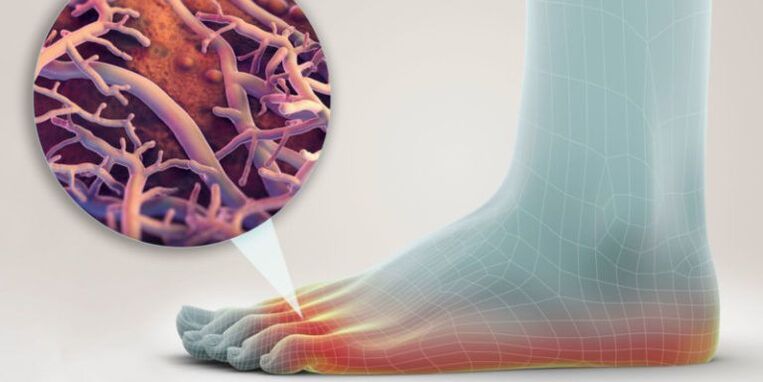
The appearance of fungus on the nails is due to the following factors:
- The presence of a parasitic fungus that causes the development of the disease. The fungus is not caused by a single infection, but by a number of different microorganisms, making the nature of the disease ambiguous. Depending on the pathogen, treatment is prescribed, so the diagnosis is simply necessary for the patient.
- Conditions favorable to the development of mycoses. Even if it enters the body through microcracks in the skin, the virus does not pose any particular danger to humans: the immune system can easily cope with an unidentified object. The risk of developing fungus increases significantly in people who wear tight, uncomfortable shoes, are prone to excessive sweating, have fatty deposits, or abuse alcohol and tobacco products. Long-term use of medications and decreased acidity of the feet can also weaken the protective function of the body.
Without these two conditions, the development of nail fungus is impossible. To avoid its development, it is enough to follow the rules of personal hygiene, not to walk barefoot in public places (swimming pools, beaches) and not to wear someone else's shoes and underwear.
What the fungus cannot tolerate
Fungal microorganisms are very resistant to external factors, but in some cases they cannot resist and die. Medicines and recipes of traditional medicine necessarily contain special ingredients that have a detrimental effect on mycoses. These include certain vegetables, iodine, vinegar and other organic products.
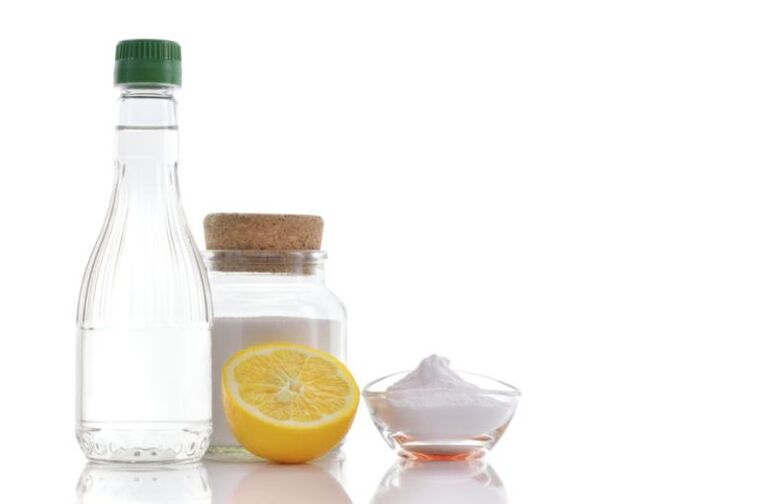
Traditional methods of combating nail fungus
Traditional methods will help stop the spread of infection and neutralize it inside the nail. The main advantage of these recipes is that they are easy to prepare and consist of effective ingredients that do not require high financial costs.
Vinegar is a kind of chemical weapon that creates an acidic environment dangerous for infection. They can be used for nail care, making compresses and baths, but all this is prohibited if there are open wounds and cracks on the fingers. Positive changes are noticeable after a month of using vinegar.
- For the recipe you will need 2 tbsp. vinegar and rubbing alcohol. Mix well and add 1 tbsp. glycerin. Apply 1 drop of product to the affected nail and rub with gentle movements. Treat until the fungus is completely gone.
- Apple cider vinegar baths. Pour 2 to 4 glasses of liquid into a shallow basin and immerse your feet in it. You can dilute with warm water and add a little baking soda to enhance the effect. Keep your feet in the container for 3 hours.
- Foot ointment. Mix the beaten chicken egg, sunflower oil (20 ml) and vinegar (40 ml). It is recommended to add repudin (5 g). Apply the mixture to the nail and finger.
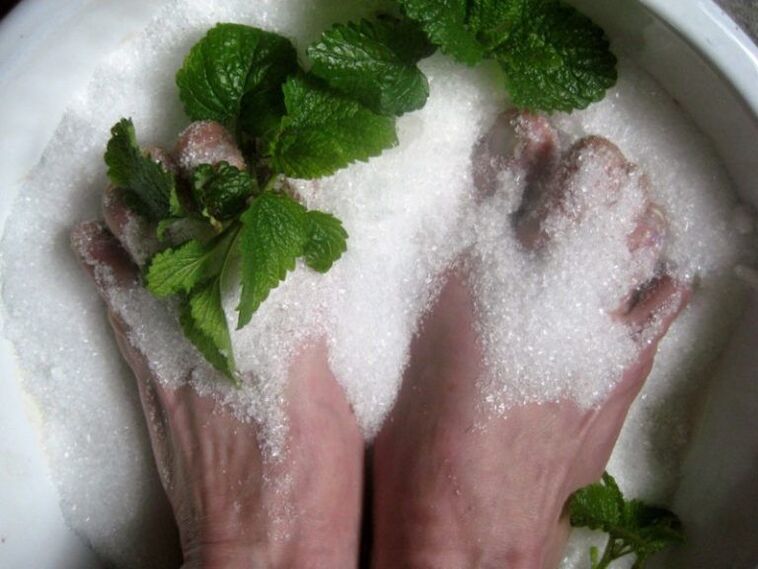
Salt has good anti-inflammatory properties, also kills pathogenic bacteria and relieves inflammation of skin areas. It is best to take baths in which salt is dissolved in water. Thanks to this, the acid and alkali contained in it have a stronger effect on the affected areas. This treatment method has a dual effect: the acidic environment, combined with the high water temperature, kills dangerous mycoses.
- Apply a few pinches of salt between your toes. Leave for 1 hour. Repeat the procedure twice a day.
- Therapeutic baths. In 4 liters of water, mix 0. 1 kg of salt (table or sea salt is suitable) and 4 tbsp. vinegar. Apply every day.
- Heat 3 liters of water. Add 2-3 tbsp. salt and 0. 5 tbsp. potassium permanganate (potassium permanganate), mix well. The duration of treatment lasts 1. 5 weeks. Can be used for preventive purposes.
- Red pepper strengthens nails well, makes the epidermis stronger, allowing it to resist harmful bacteria. It contains many microelements that stimulate natural processes and improve blood circulation.
- Pepper mask. Mix 1 tbsp. ground pepper, 2 tbsp. water and 3 tbsp. cosmetic hand cream. The product will help restore the nail plate. Add 2-3 drops of essential oil if desired.
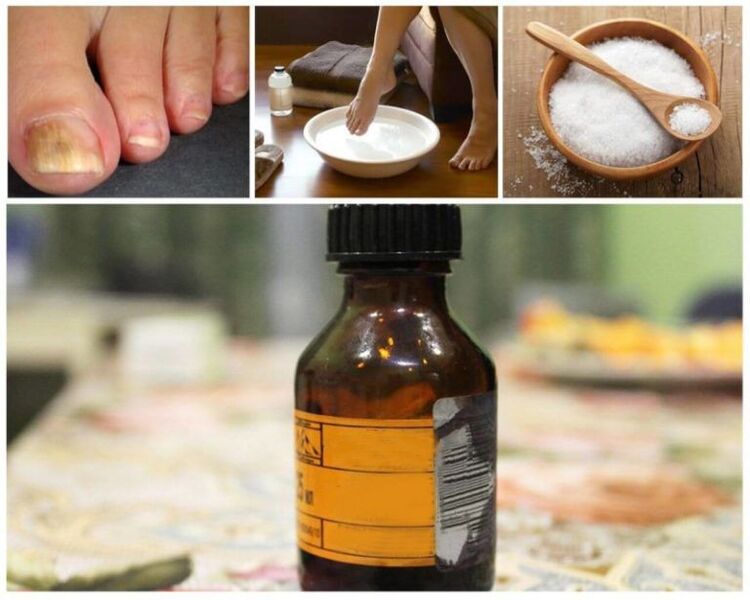
Iodine is a powerful natural antiseptic. It is mainly used for severe forms of fungus, when the infection has already affected the tissues around the nail. This is an effective remedy that can be purchased at an affordable price at any pharmacy. It is used to remove wound infections and cauterize nail growth. Iodine also breaks down the proteins that make up parasitic fungi.
- After any bath, you need to treat the skin of your legs, feet and nails with iodine. This will disinfect the affected areas and dry them. The procedure is carried out 3 times in a row after drying the previous layer of iodine.
- Apply 1 drop of iodine to the affected nail, avoiding contact with surrounding tissues. They can be spread with heavy cream before making this. Iodine will affect the source of infection. Toenail fungus is afraid of this like fire.
- Iodine lotions. Apply the liquid to a cotton ball or cotton swab, then apply it to the site of infection.
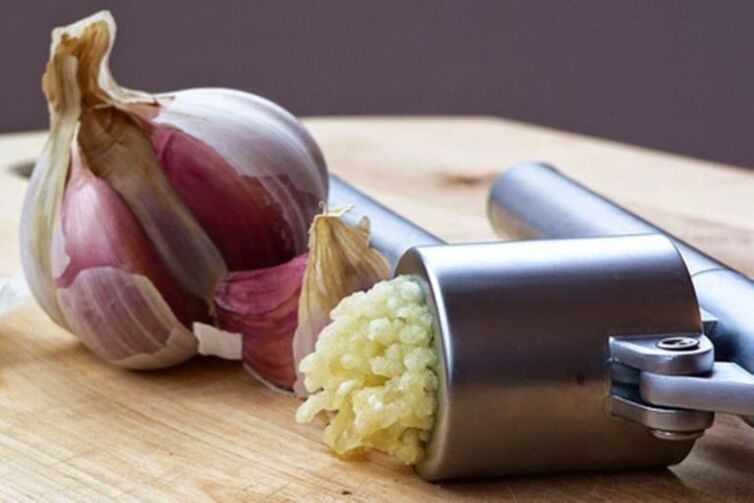
Garlic for foot fungus should be used with extreme caution: concentrations that are too high can cause burns and skin lesions. Only proper use of the bulbous plant will help in the fight against onychomycosis.
- Garlic infusion. Finely chop 2 unpeeled garlic cloves and add vegetable oil (0. 5 l). Leave for 3 days. Avoid exposure to the sun. Take 1 tablespoon orally for 30 days. every day.
- Groats. Take 1 to 2 heads of garlic and chop them with a knife or in a blender. Apply to nail. Before application, it is necessary to steam the nail plates, keeping them a little in hot water with the addition of lemon juice.
- Alcohol tincture. Pour 2-3 heads of chopped garlic into ¼ cup. Leave for 2 days. Use the ready-to-use product to care for your nails morning, afternoon and evening.
What's so scary about toenail fungus?
Nail fungus is afraid of the following factors:
- An acidic environment that has an aggressive effect on the fungus. To create it, you will need regular vinegar or some kind of acid (salicylic, orthoboric). These substances can be used as independent remedies, applying them to a cotton pad or stick and then to the affected areas. After regular use, rough tissues will become softer and skin tags will decrease in size. Additionally, due to the acidic environment, fungal infections face difficulty when trying to penetrate the deeper layers of the skin.
- Antiseptics and disinfectants. These drugs prevent decay processes on the surface of open wounds, are suitable for tissue treatment and destroy all infections. The most common drugs in this group include tablets and ointments based on ketoconazole and other substances aimed at eliminating fungal infections.
- Heat. If it reaches 60 degrees and above, the chances of survival of microorganisms are almost minimal. At this temperature, it dies. Their structure is destroyed, so the disease stops and disappears completely. As the temperature increases, the healing process speeds up. Shoes and socks are treated in this way to destroy any spores.
Compliance with hygiene rules
Maintaining good hygiene is the main requirement for people who do not want to be infected with fungi. To protect yourself from illness, you must:
- disinfect shoes and wash socks regularly;
- using personal cosmetics;
- maintain body cleanliness;
- process nail tools;
- do not walk barefoot on beaches, swimming pools and other crowded places.
















